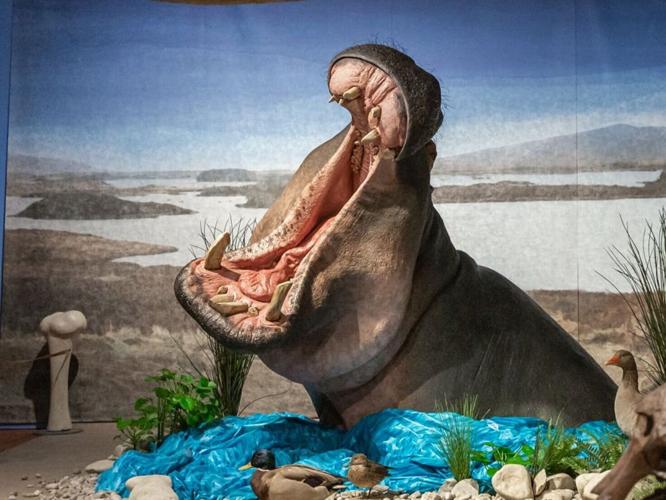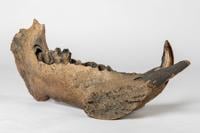
Hippos lived at the Upper Rhine in the same time frame as mammoths. (Rebecca Kind via SWNS)
By Stephen Beech
Hippos lived in Europe alongside mammoths and woolly rhinos during the last Ice Age, according to new research.
Detailed analysis of bone finds shows that the heat-loving semi-aquatic mammals inhabited part of present-day Germany around 47,000 to 31,000 years ago - 80,000 years more recently than previously thought.
Until now, it was believed that hippos - only found today in sub-Saharan Africa - became extinct in central Europe about 115,000 years ago.
But the new study, published in the journal Current Biology, shows they survived in central Europe far longer than previously assumed.
An international research team proved hippos were still living in the Upper Rhine Graben in south-west Germany during the middle of the last Ice Age.
The researchers explained that the Upper Rhine Graben is an important continental climate archive.

(Photo by Pixabay via Pexels)
Animal bones that have survived for thousands of years in gravel and sand deposits are a valuable source for research.
Dr. Ronny Friedrich, an expert in age determination at Curt Engelhorn Centre Archaeometry (CEZA), Germany, said: “It's amazing how well the bones have been preserved.
"At many skeletal remains, it was possible to take samples suitable for analysis – that is not a given after such a long time.”
The research team examined several hippopotamus finds using state-of-the-art radiocarbon analysis.
Ancient DNA sequencing showed that European ice age hippos are closely related to today's African hippos and belong to the same species.
Radiocarbon dating confirmed their presence during a milder climatic phase in the middle Weichselian glaciation.

Left mandible fragment of a female hippopotamus from Reiss-Engelhorn-Museen Mannheim, Slg. Reis Hippopotamus sp. Age dating: Between 46,000 and 48,300 years ago. Location: Bobenheim-Roxheim, Rhine-Palatinate district. (Rebecca Kind via SWNS)
Further genome-wide analysis indicated "very low" genetic diversity, suggesting that the population in the Upper Rhine Graben was small and isolated.
The results and further fossil evidence show that they appeared in the same time frame as species adapted to cold temperatures, such as mammoths and woolly rhinos.
Study first author Dr. Patrick Arnold said: “The results demonstrate that hippos did not vanish from middle Europe at the end of the last interglacial, as previously assumed.
“Therefore, we should re-analyse other continental European hippo fossils traditionally attributed to the last interglacial period.”
Project leader Professor Wilfried Rosendahl is convinced that Ice Age research still holds many questions.
He said: “The current study provides important new insights which impressively prove that Ice Age was not the same everywhere, but local peculiarities taken together form a complex overall picture – similar to a puzzle."
Rosendahl added: "It would now be interesting and important to further examine other heat-loving animal species, attributed so far to the last interglacial.”











